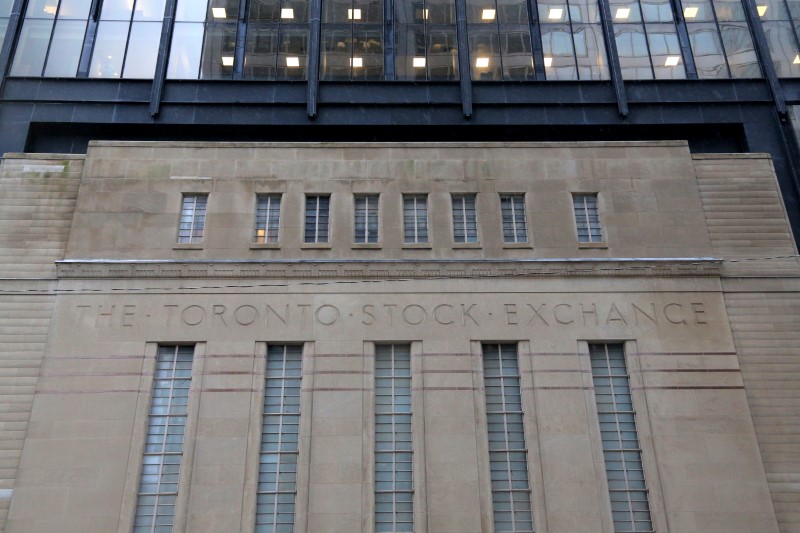CCH Holdings prices IPO at $4 per share on NASDAQ
Investing.com - Canada’s main stock exchange ended lower on Wednesday as investors gauged the staying power of a ceasefire between Israel and Iran.
On Wednesday, the S&P/TSX Composite settled down 0.57% at 26,566.32, retreating from a new all-time high closing level touched Tuesday, eclipsing the prior record notched on June 12.
Along with hopes for a prolonged ceasefire in the days-old Israel-Iran conflict, which eased fears over a potential disruption in crude supplies out of the oil-rich Middle East region, traders were also assessing benign Canadian inflation data for May.
A drop in gasoline costs, as well as cooling shelter, food and transportation costs, helped keep annualized inflation in the country unchanged at 1.7% last month.
Energy stocks were pulled down by a decline in oil prices to multi-week lows following the Israel-Iran ceasefire, but were offset by a climb in the financials and technology sectors.
U.S. indexes down, Nasdaq up of Nvidia (NASDAQ:NVDA) gains
U.S. stock futures were muted, as investors kept tabs on the halt to hostilities between Israel and Iran and assessed commentary from Federal Reserve Chair Jerome Powell.
At close, the Dow Jones Industrial Average shed 106 points, or 0.25%, to 42,982.43, the S&P 500 barely avoided red, closing up 0.03%, to 6,093.86, but NASDAQ Composite gained 61.02 points, or 0.31%, to 19,973.55.
Nasdaq gains were driven as Nvidia shares jumped 4% and logged record high after analyst at Loop Capital assigned a street high target of $250.
Ceasefire appears to be holding
The Israel-Iran ceasefire brokered by President Donald Trump appeared to still be in place on Wednesday, one day after the regional rivals said they had ended an air war.
Earlier on Tuesday, Trump announced the start of the ceasefire after 12 days of fighting, but lashed out at both Israel and Iran for carrying on with attacks that seemed to have already been planned before the agreement was revealed.
Trump previously came in on the side of Israel, ordering air strikes against Iranian nuclear facilities over the weekend. He claimed that the strikes had "obliterated" the sites, but U.S. intelligence agencies have found that Iran’s enriched uranium stocks had not been eradicated and the nation’s mostly-underground nuclear program may have only been set back by a couple of months, according to media reports.
Powell returns to Capitol Hill
Fed Chair Powell returns to Capitol Hill later Wednesday as part of his two-day Semiannual Monetary Policy Report to Congress, addressing the Senate after speaking to the House the prior day.
In prepared remarks released on Tuesday, Powell indicated that the central bank is prepared to maintain current interest rates while monitoring economic developments.
Facing a grilling from House lawmakers over why the Fed is not moving quickly to slash rates, an often-repeated demand from Trump, Powell said officials are wary that price gains could accelerate again soon due to the implementation of elevated U.S. tariffs.
Investors will also be watching out for data on new home sales, after U.S. consumer confidence dropped more than expected in June, as Americans were becoming more worried about the economy, despite strong job numbers and low unemployment.
One of the biggest reasons for the decline appeared to be rising concerns about inflation and tariffs.
Crude rebounds
Crude prices edged higher after falling sharply in the last two sessions as a ceasefire between Iran and Israel diluted the chances of oil flows being disrupted.
At 4.05 ET, Brent futures climbed 0.7% to $66.63 a barrel and U.S. West Texas Intermediate crude futures rose 1.2% to $65.19 per barrel.
Prices had plummeted to a near three-week low on Tuesday after President Trump announced a ceasefire between Israel and Iran, helping quell some concerns over supply disruptions stemming from their conflict.
Data from the American Petroleum Institute, released on Tuesday, showed that U.S. inventories shrank nearly 4.3 million barrels in the past week, following on from a bumper 10.1 mb draw from the week before.
Official inventory data from the Energy Information Administration are due later on Wednesday.
Gold ticks higher
Gold prices moved higher in European trade after sharp losses in the prior session, as a weaker U.S. dollar offered some support, even as the ceasefire between Israel and Iran dampened demand for safe-haven assets.
Spot gold rose 0.9% to $3,326.19 an ounce on Wednesday, while gold futures for August gained 0.16% to $3,339.67/oz
